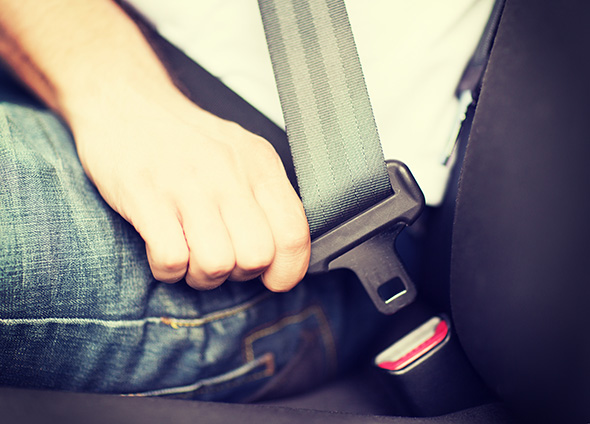By: Gov Auctions | 10 January 2018
A Guide to Teaching your Teen to Drive

Driving a motor vehicle is like any acquired skill. It improves with time and lots of hands-on experience, which means when we first begin driving, we are most at risk of having an accident. And the statistics support this, showing that one in five 16 year old male drivers and one in ten females will be involved in a motor vehicle accident of some kind in their first year of driving.
A new driver lacks the skills that only come with experience, such as the ability to automatically scan the environment around you while driving, to recognize potential hazards when you see them, and to make fast and correct decisions to avoid disaster in dangerous situations.
The more you can teach your kids when they first begin driving, the better their chances will be of avoiding accidents. This guide is designed to help you in that task, with 14 useful tips when teaching your teen to drive.
First, set some ground rules

Getting their first car is an exciting time for a teen, and the attraction of learning to drive is often as much about being able to impress their friends and reinforce their independence as it is about learning how to get safely from A to B. So it’s a good idea to lay down some ground rules before they even get behind the wheel, so that when you’re no longer next to them in the passenger seat, they’ll hopefully continue to drive safely out of instinct.
- Rule 1 – minimise distractions: Everything in the car can be a distraction including, cell phones, loud music and even louder friends. Convince your teen to keep the music down, their hands off their phone and their friends under control while the car is in motion, and they’ll be far more likely to get there without incident.
- Rule 2 – minimise passengers: Statistics show that the risk of having an accident increases fivefold if there are two or more teenage occupants, so convince your teen to limit their chauffeuring duties to immediate friends only.
- Rule 3 – minimise night driving: This might be a tough one to get through, but more accidents happen at night than during the day, so if you can convince your teen to limit their night driving to a reasonable curfew time, you’ll know you’ve done all you can to keep them safe; short of driving them everywhere yourself.
- Rule 4 – no drugs or alcohol: This should be a no-brainer (especially as they’re not supposed to be drinking until they’re 21). But it does happen and drunk and drugged drivers die every day on our roads, so make sure your teen knows what the repercussions will be if they’re ever tempted to go down that road.
- Rule 5 – buckle up: More unrestrained people die in motor vehicle accidents than those wearing seatbelts. It’s not rocket science, so convince your teen to always buckle up and get their passengers to do the same.
14 essential tips for teaching your teen to drive

So, now that they’re armed with the ground rules and eager to get out there, here are 14 tips for you to keep in mind when teaching your teen how to drive.
1. Teach them about the car first
Before they even think about turning the key in the ignition, have your teen familiarize themselves with every aspect of the vehicle. If they know beforehand how to adjust the seat and mirrors and operate the wipers, lights, indicators and radio, they’re less likely to cause an accident trying to figure out how to work them while they’re driving.
2. Start them off small
Rather than choosing a busy street for their first driving lesson, choose a quiet street or empty parking lot where they can learn the basics such as parking and reversing without having to worry about traffic. Introduce them to other vehicles once they have mastered the art of driving the car.
3. Give clear directions
Speak clearly to your teen and give them directions well in advance rather than at the last minute. And always be clear on what you want them to do by first telling them where the action will take place (i.e. at the next intersection), followed by what they will need to do (i.e. turn right).
4. Be patient with them
Your teen is going to make mistakes, but rather than turning them into traumatic events or shouting matches, you want them to be positive learning experiences. Be patient with them and after explaining where they went wrong, allow them to repeat the manoeuvre and this time hopefully get it right.
5. Teach them to drive defensively
The key to safe driving is consistency; maintaining a steady speed and direction and never slowing or accelerating abruptly or turning too sharply. Teach your teen to be patient when they see aggressive or careless driving on the road and to keep as much distance as possible between themselves and other vehicles to allow for the unpredictability of others.
6. Lead by example
The best impression you can make on your teen is to walk the talk. If you are a good driver and are courteous and mindful of others on the road, your teen is more likely to adopt good driving practices as well. If you constantly speed, tailgate and exhibit road rage tendencies, odds are your teen will follow in your tracks.
7. Be alert
When coaching a new driver, you need to be ready for anything. Do not eat, read or listen to music, but sit in a position where you could place a hand on the wheel if needed. And always double check your teen’s actions, such as checking mirrors before turning, at least until you feel confident they know what they are doing.
8. Teach them about blind spots
While blind spots are covered in driving manuals, the best way to understand them is to experience them. Show your teen where they are in your vehicle and teach them to turn their head physically to check before changing lanes, rather than relying on their mirrors alone.
9. Teach them about adverse driving conditions
Your teen will have to drive in all sorts of weather and road conditions during their driving career, so the sooner they know how to drive in snow or correct a skid on ice the better. Once they know the basics of normal driving, take them out in adverse weather conditions or book them in for an advanced driver training lesson.
10. Teach them how to park
Learning how to parallel park is one of the toughest skills for a new driver to master, so it can be a good idea for them practice in a parking lot between two uprights at first. The secret is to make sure they pull up level with the front of the vehicle they are parking behind and then begin turning in towards the kerb as soon as they have cleared the vehicle’s trunk.
11. Talk with them, not at them
Talking is the key to active learning and understanding. If you encourage your teen to talk about what they are doing as they drive, you will be able to glean what they do and don’t understand and can talk through situations with them as they occur.
12. Educate them about speeding
Speeding is a leading cause of teenage traffic accidents, with teenage males being the worst offenders. Teach your teen that speed limits are in place for a reason and that a motor vehicle is not a toy, but a lethal weapon if used incorrectly.
13. Teach them about trucks
With so many tractor trailers on our freeways, it’s important to know how to drive safely amongst them. Teach your teen to be aware of a truck’s blind zones and to allow plenty of room when merging in front of them, due to the greater braking distances they require.
14. Teach them a hill start
Back when all cars had manual transmissions, making a hill start was a skill that involved releasing the clutch at the same time as you released the handbrake and pressed down on the accelerator. However making a hill start in an automatic vehicle still requires some coordination between handbrake and accelerator and you should have your teen practise this manoeuvre as part of their driving instruction.
A final word about safety
While teaching your teen safe driving techniques is important, it is also important to ensure they have a safe vehicle to drive. A reliable model that’s relatively new and has been regularly serviced is ideal, and the best way to pick one of those up is by attending an auction that specializes in used government fleet vehicles.
These are late model vehicles with full service histories that government departments exchange for new vehicles every few years. They can be bought at auction for considerably less than you would pay in a dealership, and while they may not be the red roadster your teen has in mind, they will get them from A to B safely, economically and affordably. Find out more about the vehicles we have available at Gov Auctions today.